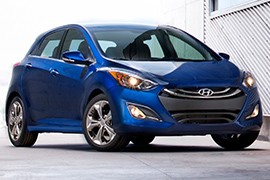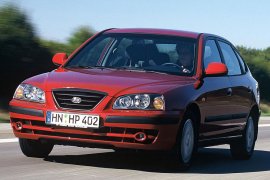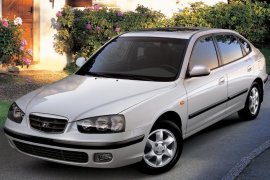HYUNDAI Elantra 5 Doors Models/Series Timeline, Specifications & Photos
First production year: 2000
Engines: Gasoline, Diesel
Body style: Hatchback
The 5-door version of the popular 4-door sedan, the Hyundai Elantra GT was a compact hatchback that delivered on fuel economy and affordability.
While based on the sedan body style, the new Elantra GT had a shorter wheelbase. Even with the shorter wheelbase, it still offered more maximum cargo volume than others competitors in the segment such as the Ford Focus, the Mazda 3 and others.
Aesthetically, the Elantra GT featured flowing lines and sculpted angles, with the functional design turning it into a more aerodynamic vehicle than the Subaru Impreza.
Fitted with a 1.8-liter 4-cylinder engine, the hatchback had 148 hp under the hood. The unit was mated with a 6-speed manual or a 6-speed automatic transmission.
Inside, the Hyundai Elantra GT featured a modern design. The two round gauges behind the wheel were easy to read and all controls were intuitively placed and within easy reach.
Wearing the GT badge, the Elantra featured some technical modifications to make it sportier. The new model featured driver selectable steering mode, with 3 steering modes: comfort, normal and sport.
With the comfort mode selected, it offered the greatest ease of steering designed for city driving and parking. The Sport mode was optimised for higher speed highways, while the normal mode was suitable for mixed driving conditions.
Space-wise, the rear-cabin offered enough legroom, but headroom was on the tight side for taller adults.
The cargo volume offered was good and could be extended by folding the rear seats. The rear seats were a bit uneasy to fold.
Opting for the top of the range, the Elantra GT came equipped with features such as leather upholstery, a panoramic sunroof, 17-inch alloys, a sport tuned suspension and others.
Hyundai continued to improve its lineup and, after successfully introducing its third generation of the Elantra in 2000, refreshed it in 2003.
Most of the carmakers are introducing facelifted versions after four years from the launch of a new generation. Hyundai shortened that period to three years. As a result, the 2003 Elantra came with several improvements to keep its market share.
The facelifted version featured a wider grille at the front and redesigned headlights and bumper on the outside. But overall, it was hard to tell the differences between the two vehicles. In the rear, there was a simpler design of the decklid and improved taillights. When Hyundai introduced the third generation of the Elantra, it axed the station-wagon version and chose to offer the vehicle as a sedan and a 5-door hatchback with a sloped rear window.
Inside, a reworked instrument cluster provided a crisp design and well-organized layout. Its white-on-black gauges with blue back-lit were easy to read. The center stack featured a Clarion sound system fitted as an option, and the HVAC controls placed bellow, with a tiny display that was harder to read, especially at night. The Elantra's cabin was fit for five passengers, with a split-folding rear bench seatback, to increase the trunk volume from 569 liters (20.1 cu-ft) to 1047 liters (37 cu-ft).
Under the hood, Hyundai installed a choice of five engines, both diesel, and gasoline. It received a 4-speed automatic transmission for selected markets while the 5-speed manual was fitted as standard for the entire range.
Hyundai introduced the third generation of the Elantra in 2000, and the carmaker considered that the hatchback would draw more attention to it than the sedan. It was wrong.
The car barely made it into the compact segment, judged by the '90s standards. It was a new era for Hyundai, and it showed it, especially from the outside. Another strong point for Elantra was the reliability index, which grew when compared to its predecessor.
The Elantra hatchback sported an extended cabin with a sloped rear end. At the front, it featured angled headlights with sharp lines and distinct headlamps inside the same clear-glass cover. Its V-shaped grille was continued on the hood with two long lines connected to the A-pillars. On the sides, the beltline started from the wheel arches end went all the way to the taillights. The European customers were not that happy with the look of the greenhouse's rear end.
Inside, the Elantra featured a simple dashboard and instrument cluster, with a rounded center console. Its front seats featured more adjustments, including on the vertical axis. In the rear, there was limited headroom for adult passengers but enough for children. It's rear split-folding bench allowed a moderate increase for the, otherwise, average-sized trunk.
Hyundai installed a choice of three engines for the Elantra. The base version offered enough power for a daily driver, and it was fuel-efficient. At the same time, the top-performer featured a 2.0-liter gasoline engine, quick enough to keep the rhythm with other European compact vehicles.


